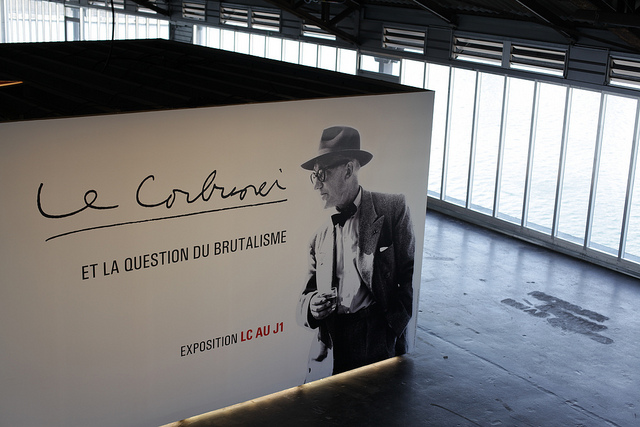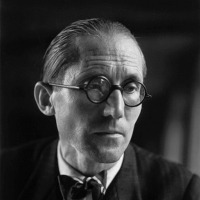When they asked me to organise an exhibition on Le Corbusier within the framework of Marseille-Provence 2013, I immediately accepted the project. There was special motivation because the last exhibition was held in 1987, 26 years earlier, an entire generation ago. And, since then, I’ve had the opportunity to present Le Corbusier’s work in the four corners of the world, whether it be in Taiwan, India or Brazil ... So, to return to Marseille was a little bit like taking Le Corbusier back home to the city where his name and work resonates deeply, most notably as a result of the Unité d’Habitation on the boulevard Michelet, one of the most celebrated apartment buildings in the world.
When I later learned that the designated space for this exhibition was the J1, my enthusiasm doubled as this would a unique opportunity to present the work of Le Corbusier in an unusual space: on the very quay in the port of Marseille where he embarked for Algeria on numerous occasions and for Athens for that memorable trip with his fellow architects in 1933.[...]
The exhibition initially follows a chronological path, then a thematic path, to address the question of Le Corbusier and Brutalism during his mature period of creation. In this sense, these paintings, drawings, sculptures, tapestries, enamels, models, films, and photographs, all of which were produced as a result of what Le Corbusier described as the ‘atelier of patient research’, testify to the exceptional and powerful work of one of the 20th century’s most significant architects.
Text.- Jacques Sbriglio.

Le Corbusier and the question of brutalism. At the LC AU J1. Marseille, France. © Photo : Chloé Heyraud
FIRST PART OF THE EXHIBITION_TO THE ORIGINS OF BRUTALISM
This exhibition raises the hypothesis that the Brutalist aesthetic, which received both its inauguration and coronation with the construction of the Unité d’Habitation in Marseille (1945-1952), was much more than a mere trend that Le Corbusier dabbled with. In reality, it was the fruit of a long process of research and experimentation that was carried out project after project, book after book, and painting after painting, throughout the years that preceded World War II.
The first section of this exhibition, entitled ‘To the Origins of Brutalism’, illustrates the high stakes involved in this construction technique that was so overtly intellectual and artistic. It begins with the years of training and the subtle influences that shaped Le Corbusier as he attempted to carve a path between idealism and rationalism. It continues with his clear position on the notion of regionalism during the 1930s and his exploration of ancestral cultures, whether South American or North African. It’s also during this period that Le Corbusier took an interest in ‘arts primitif’ and ‘art Brut’. [...]
SECOND PART OF THE EXHIBITION_LE CORBUSIER AND THE QUESTION OF BRUTALISM
Le Corbusier never called himself a ‘Brutalist’ architect, or a ‘Purist’ painter. It was the critics who decided on these appellations. New Brutalism was born in England in 1953 under the impetus of the architect Peter Smithson. It was analysed and theorized through the work of the architecture critic Reyner Banham, who devoted several articles to the subject. It acted as a call to order for architects to resist both the return to historicism that was manifesting itself in England and the spread of the culture of consumption that was taking hold of European society at the start of the 1950s. New Brutalism defined itself by its critical stance toward the International Style that was an offshoot of Modernism and was already acclaimed as an important new school of architecture.
Practical information.-
Date.- From 11 October to 22 December 2013.
Location.- J1, Place de la Joliette, boulevard du Littoral, 13002 Marseille. Metro 2 and Tramway 2, Joliette station.
Hours.- Opendaily, except Mondays, from noon to 6pm.
Tickets.- Full price: 10 €/Reduced price*: 5 € for youth 18 to 25, students, unemployed.
Free*: less than 18 years old, with City Pass Marseille Provence 2013,benefits recipients...








































